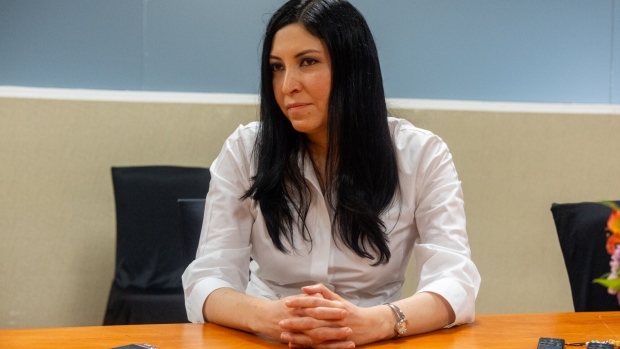Jun 27, 2024
Banxico Governor Rodriguez Signals Openness to More Rate Cuts
, Bloomberg News

(Bloomberg) -- The peso’s volatility this month influenced the central bank’s decision to hold rates steady on Thursday, said Banco de Mexico’s Governor Victoria Rodriguez. Given its possible effects on inflation, it could also play a role in how the bank weighs future cuts.
The peso slumped early in June after Claudia Sheinbaum won Mexico’s presidential election, before paring losses — one factor in the bank’s decision to hold rates at 11%. Rodriguez said Banxico also took into account the recent acceleration of overall inflation and the bank’s own moderate adjustment to the forecast for price increases.
She cited progress in the bank’s effort to combat inflation, which along with a restrictive monetary policy have created space to cut rates in future. While the peso’s depreciation can contribute to inflation, it’s partly offset by a weaker economy, the central bank board said in a statement.
“In this context, I’d say we continue in a phase in which the advances to the disinflation process and the degree of monetary policy restriction that we have allow us to discuss cuts to the reference rate,” Rodriguez said in an interview with Bloomberg News after Thursday’s decision.
The governor declined to say whether the bank would consider cutting as soon as August.
Mexico’s peso swung from losses of as much as 0.9% in early Asian training Friday, to gains of as much as 0.8% in the aftermath of the first US presidential debate.
Annual inflation in Mexico has accelerated in recent months. The volatility of the exchange rate in the aftermath of the June 2 election has led the peso to lose over 7% of its value this month.
“Going forward, what we’re seeing is that we’ll have space to reduce the degree of restriction. Reducing the rate does not mean that we will stop being restrictive,” Rodriguez said.
“The exchange rate volatility has been reduced and now it’s returning to the levels observed before the episode of recent financial turbulence,” she added.
The bank delivered a first cut in March and then decided to hold in May, before delivering the second straight hold on Thursday. The decision was widely expected after the volatility following the election, as investors were unsettled by a strong performance by the ruling Morena coalition that would allow it to change the constitution.
The other factors that the bank considered included overall improvements to inflation from its peak and that the weakness of the Mexican economy seen at the end of 2023 has turned out to be “deeper and longer” than the board members had anticipated, the governor said.
The bank’s board waited longer than other major Latin American central banks to begin easing. In the statement accompanying the Thursday decision, Banxico, as the central bank is known, indicated it was open to discussing more interest rate cuts if the inflation panorama allowed.
Banxico now projects that the country will reach its target of 3% inflation by the end of 2025.
--With assistance from Philip Sanders and Ronojoy Mazumdar.
(Updates with peso move in the fifth paragraph.)
©2024 Bloomberg L.P.







